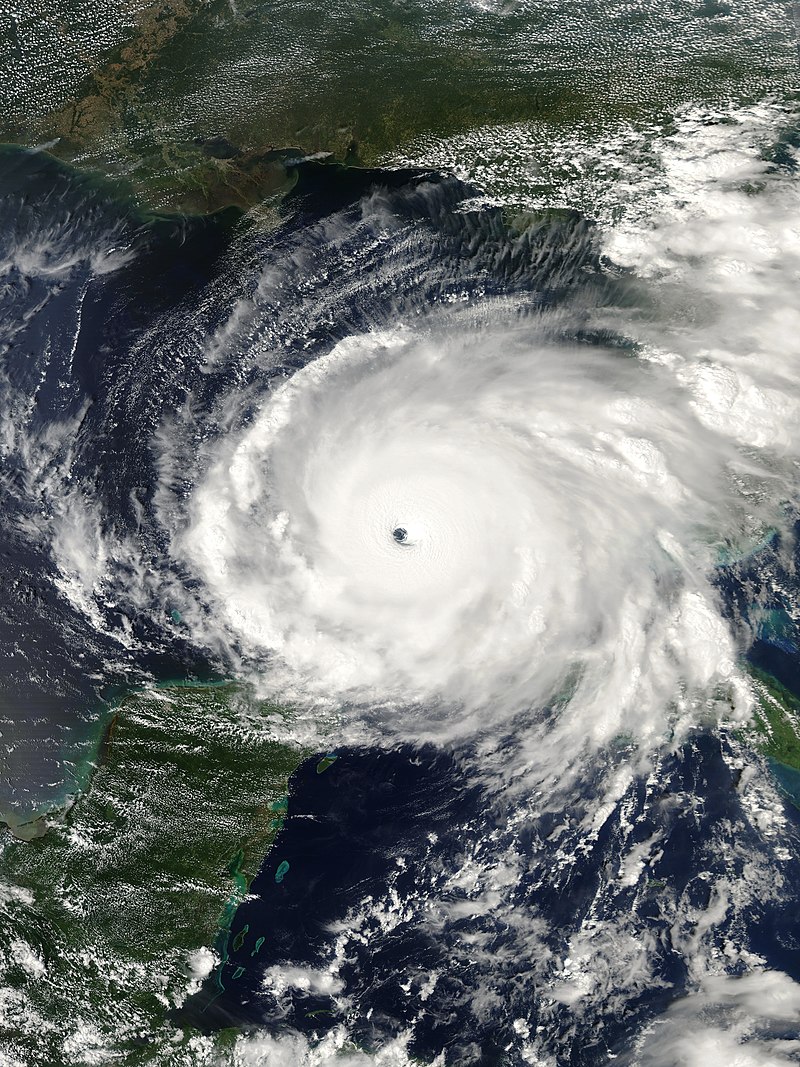Hurricane Rita, a formidable tropical cyclone, made its mark as the most intense tropical cyclone ever recorded in the Gulf of Mexico and the fourth-most intense Atlantic hurricane in history. As part of the historic 2005 Atlantic hurricane season, which witnessed three of the top ten most intense Atlantic hurricanes, Rita emerged as the seventeenth named storm, tenth hurricane, and fifth major hurricane of that season. This article aims to delve into the impacts, damages, casualties, and recovery efforts resulting from Hurricane Rita.
Pre-Landfall: Rita originated near The Bahamas on September 18, 2005, originating from a tropical wave that developed off the West African coast. Its westward movement led it through the Florida Straits and into an environment of unusually warm waters. By September 21, Rita had rapidly intensified, attaining peak winds of 180 mph (285 km/h) and earning the classification of a Category 5 hurricane. This tremendous strength placed Rita among the most powerful storms on record.
Landfall and Impacts: As Rita neared the coast, it weakened to a Category 3 hurricane before making landfall in Johnson’s Bayou, Louisiana, situated between Sabine Pass, Texas, and Holly Beach, Louisiana, on September 24, 2005, with sustained winds of 115 mph (185 km/h). The storm surge generated by Rita inundated low-lying communities across the Louisiana coast, exacerbating the devastation caused by Hurricane Katrina, which had struck the region less than a month earlier. The hastily-repaired levees in New Orleans were breached once again, exacerbating the already dire situation.
The areas directly affected by Rita experienced severe to catastrophic flooding and wind damage. In Orange and Jefferson counties in Southeast Texas, 4,526 single-family dwellings were destroyed, while an additional 14,256 homes suffered major damage, and 26,211 sustained minor damage. Mobile homes and apartments were also significantly damaged or destroyed. The storm’s wrath resulted in the declaration of disaster areas in nine Texas counties and five Louisiana parishes.
Casualties and Recovery: Tragically, Hurricane Rita caused numerous fatalities. Texas bore the brunt of the storm, with 113 reported deaths, the majority of which occurred during the evacuation of the Houston metropolitan area. Across the lower Mississippi Valley, moderate to severe damage was reported, and heavy rainfall extended from Louisiana to Michigan. Central Louisiana witnessed a peak rainfall of 16.00 inches (406 mm). The hurricane also spawned several tornadoes along its path.
The financial toll of Hurricane Rita’s destruction was substantial, with total damage estimated at approximately $18.5 billion (2005 USD). The cleanup and rebuilding efforts were extensive and required significant resources. Electric service disruptions persisted for weeks in affected areas, compounding the difficulties faced by residents and hindering recovery progress.
Mitigating Future Impact: To ensure better preparedness and protection against future hurricanes similar to Rita, residents in vulnerable areas should take proactive measures. Some crucial steps include:
- Stay informed: Regularly monitor weather forecasts, warnings, and evacuation orders issued by local authorities.
- Develop an emergency plan: Create a family emergency plan that includes evacuation routes, designated meeting points, and necessary supplies.
- Prepare an emergency kit: Stock up on essential items like non-perishable food, water, batteries, flashlights, medications, and important documents.
- Secure your property: Reinforce windows and doors, trim trees and branches near your home, and consider installing storm shutters.
- Evacuation readiness: Familiarize yourself with evacuation routes, have a full tank of gas, and heed evacuation orders promptly.
- Community support: Engage with local emergency management organizations and community groups to stay informed and participate in preparedness efforts.
Interesting Fact: As a result of the extensive damage inflicted by Hurricane Rita on the Gulf Coast, the name “Rita” was retired from the list of Atlantic hurricane names in spring 2006. The World Meteorological Organization replaced it with the name “Rina” for the 2011 Atlantic hurricane season. This retirement serves as a reminder of the immense impact and destruction caused by the storm, and the importance of ongoing efforts to improve disaster response and resilience.
In conclusion: Hurricane Rita’s ferocity and record-breaking intensity left an indelible mark on the Gulf of Mexico region. The storm’s impact was particularly devastating due to its combination with the aftermath of Hurricane Katrina. The recovery process was long and arduous, with significant financial costs and tragic loss of life. By learning from the lessons of Rita, communities can take proactive steps to protect themselves and minimize the potential impact of future hurricanes.




Leave a Reply